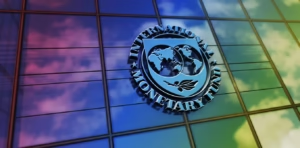
IMF support boosts momentum, but U.S. tariff threatens key export sector
- CNL Reporter
- July 12, 2025
- Weekly Economic Review
- U.S. Tariff
- 0 Comments
Weekly Economic Review:
Sri Lanka’s fragile economic recovery encountered a fresh challenge this week as U.S. President Donald Trump confirmed a 30% tariff on Sri Lankan apparel exports, effective August 1. While slightly lower than the initially proposed 44%, the new rate still significantly exceeds the 20% tariff imposed on competitors like Vietnam.
The timing is particularly troubling for Sri Lanka. Garments account for nearly 40% of the country’s exports to the U.S., valued at $747 million in the first five months of 2025 alone. The sector employs around 300,000 workers, many of them women from rural areas. Industry leaders have sounded the alarm, warning that this level of tariff is unaffordable and could result in large-scale job losses and factory closures. “If this is the end number, Sri Lanka is in trouble,” said one industry executive.
Economic Stability Gains Ground

Despite the trade setback, macroeconomic indicators show signs of improvement. On July 1, the International Monetary Fund (IMF) approved Sri Lanka’s fourth review under the $3 billion Extended Fund Facility (EFF), releasing $315 million. The IMF also waived performance breaches linked to underreported arrears and praised Sri Lanka’s progress on fiscal transparency and cost-reflective power pricing.
June inflation remained slightly negative at –0.6% but is expected to turn positive by July. First-quarter GDP growth was reported at 4.8% year-on-year. The Central Bank maintained the policy interest rate at 8% after a 225 basis-point cut in May, while financial sector reforms and digital payment systems like GovPay and LankaQR continued to progress.
The IMF disbursement, along with agreements with creditors including Japan, India, France, and China, has bolstered foreign exchange reserves and helped stabilize the currency. However, this progress could be undermined if the apparel tariff results in declining export earnings and increased unemployment.
Tariff Could Erode Growth

Economists warn that Sri Lanka’s GDP could shrink by 0.25% to 1.5% if the U.S. tariff leads to reduced apparel exports and spillover effects in related industries. The apparel sector operates on thin profit margins and lacks the capacity to absorb a 30% price shock. Exporters may shift operations abroad, and domestic production could scale down sharply.
Lower exports would be partly offset by reduced demand for imported raw materials, lower commodity prices, and some currency depreciation. However, the overall decline in net exports would drag down real GDP. Uncertainty could also discourage investment, further slowing recovery efforts.
Additionally, the loss of export revenue would negatively impact fiscal targets. Reduced corporate tax collections and weaker economic activity could strain government revenue, just as public pressure builds for subsidies to protect affected workers. This could derail the reform agenda and risk underperformance in the IMF program.
Domestic Apparel Makers Push Protectionism

In response to the growing threat from foreign imports, some local apparel manufacturers have shifted their focus inward, calling for steep import duties on finished garments. At a press briefing hosted by the Sri Lanka Shippers’ Council, industry representatives demanded a 300% to 400% increase in para tariffs on imported clothes, aiming to block low-cost goods from online platforms such as Temu and Alibaba.
Yashotharan Paramanantham, former Chairman of the Sri Lanka Apparel Brand Association, described the move as a defensive strategy to protect domestic producers. He said Customs had already taken action to end a tax practice that benefited some importers and called for new measures targeting both tax-evading and tax-paying importers.
However, critics argue that this protectionist stance contradicts the country’s export goals. Reporters pointed out the irony of seeking tax reductions from the U.S. while asking for higher import taxes at home—especially on poorer Sri Lankan consumers who rely on affordable clothing.
Economists note that IMF policy recommendations emphasize the removal—not the expansion—of para tariffs to help Sri Lanka compete in global value chains. Protectionist policies, they argue, increase consumer prices, reduce market efficiency, and create opportunities for tax arbitrage, where tax benefits are captured by domestic producers without generating revenue for the state.
Historical Lessons and Current Realities
The debate echoes 19th-century British economic reforms, particularly the abolition of the Corn Laws, which lowered food prices and boosted manufacturing competitiveness. British free traders argued that high food prices suppressed wages and limited domestic demand for non-essential goods like garments.
Sri Lanka faces similar trade-offs today. High tariffs on essentials such as rice and maize hurt consumer purchasing power, reduce demand for manufactured goods, and ultimately suppress employment and economic activity. Critics say that instead of demanding higher taxes on imports, local industries should focus on reducing their own input costs and para tariffs to become more export-competitive.
Some argue that consumers benefit more when cheap imports leave them with additional disposable income, which can be spent on services and other goods that stimulate broader economic activity and generate VAT revenue. In contrast, protectionism creates inefficiencies, raises prices, and hampers innovation.
Outlook: Uncertain but Not Hopeless

Sri Lanka’s economy stands at a crossroads. The IMF program, improving inflation, and a stronger currency all point to stabilization. But the 30% U.S. apparel tariff represents a serious threat to exports, jobs, and fiscal health. If not resolved through diplomacy or strategic adjustments, the tariff could derail much of the recent economic progress.
With less than three weeks before the tariff comes into effect, Sri Lanka must act decisively. A combination of diplomatic engagement with the U.S., trade diversification, and commitment to open market reforms will be essential to preserving momentum.
The choice is stark: move forward with policies that promote open trade and global competitiveness—or revert to protectionism that risks undoing hard-earned economic gains.

